nRF5 action!
-
When you combine my BT832XE gateway with the LNA on this external "booster," the result is really great reception range, even at 2Mbps:
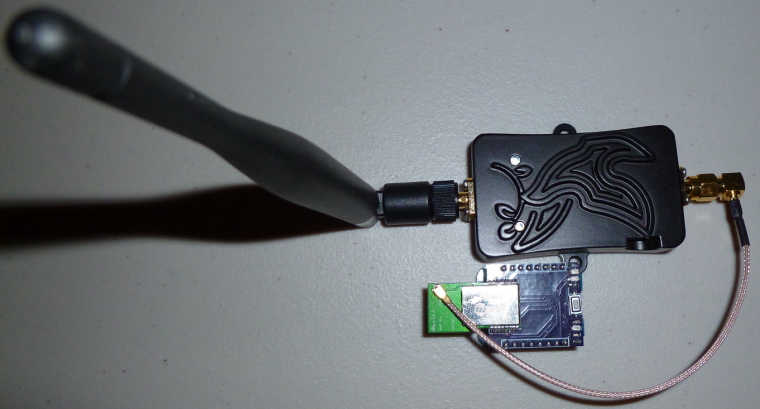
I think this combo will be hard to beat. In fact, I can receive even from nRF24L01's that are far away (further away than a nRF24L01 with PA+LNA can receive). :) -
@rmtucker said in nRF5 Bluetooth action!:
I would love to make a small pcb for the NRF core to plug in to instead of the big motherboard as below
Here you go: https://www.openhardware.io/view/510/Button-cell-Temperature-Humidity-sensor#tabs-bom
This should be even smaller and less expensive than what you wished for. I made it for the Si7021 because I had some extras laying around. The BME280 would also be a good choice.
@NeverDie said in nRF5 Bluetooth action!:
@rmtucker said in nRF5 Bluetooth action!:
I would love to make a small pcb for the NRF core to plug in to instead of the big motherboard as below
Here you go: https://www.openhardware.io/view/510/Button-cell-Temperature-Humidity-sensor#tabs-bom
This should be even smaller and less expensive than what you wished for. I made it for the Si7021 because I had some extras laying around. The BME280 would also be a good choice.
I'm realizing now that I can get a decent temperature reading from just the nRF5x chip itself. With calibration it should get even better.
-
Today I finally received the PTR9618PA that I ordered a while back:
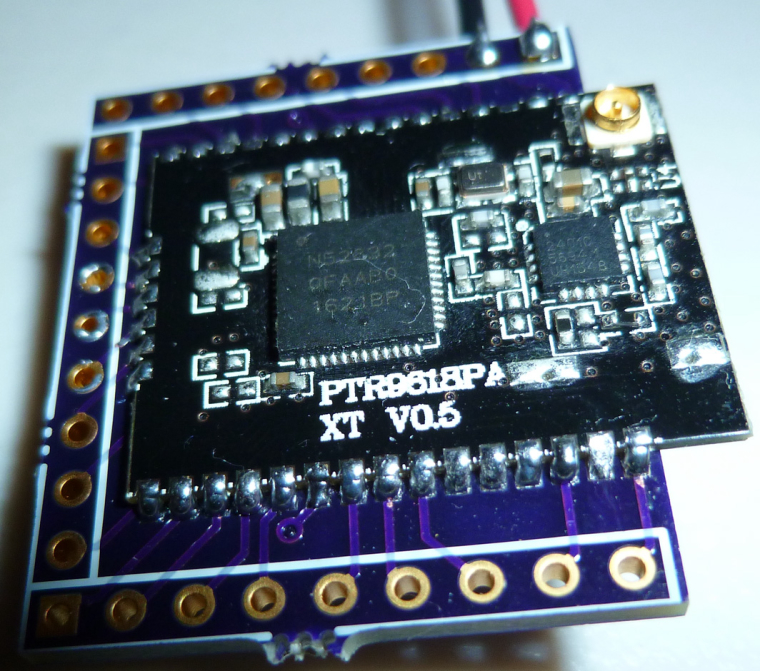
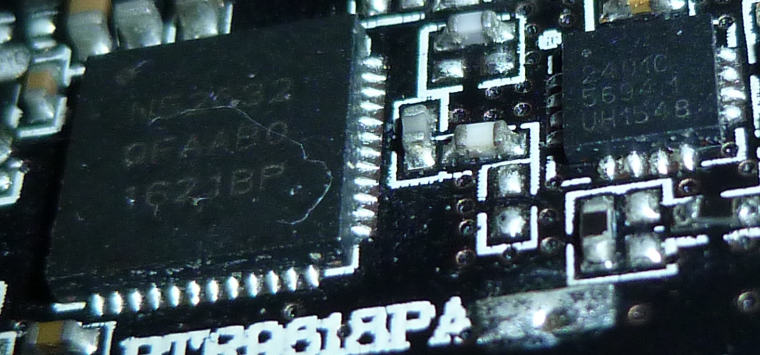
Like the Fanstel modules, it lacks a 32.768Khz crystal oscillator. Also, as you can see from the second photo, the PA/LNA chip is the 2401C: http://www.skyworksinc.com/Product/3213/RFX2401C
-
@NeverDie said in nRF5 Bluetooth action!:
@rmtucker said in nRF5 Bluetooth action!:
I would love to make a small pcb for the NRF core to plug in to instead of the big motherboard as below
Here you go: https://www.openhardware.io/view/510/Button-cell-Temperature-Humidity-sensor#tabs-bom
This should be even smaller and less expensive than what you wished for. I made it for the Si7021 because I had some extras laying around. The BME280 would also be a good choice.
I'm realizing now that I can get a decent temperature reading from just the nRF5x chip itself. With calibration it should get even better.
@NeverDie said in nRF5 Bluetooth action!:
@NeverDie said in nRF5 Bluetooth action!:
I'm realizing now that I can get a decent temperature reading from just the nRF5x chip itself. With calibration it should get even better.
I used the internal temperature in the past but i can not remember how i did it?
Do you have some example code to remind me? -
@NeverDie said in nRF5 Bluetooth action!:
@NeverDie said in nRF5 Bluetooth action!:
I'm realizing now that I can get a decent temperature reading from just the nRF5x chip itself. With calibration it should get even better.
I used the internal temperature in the past but i can not remember how i did it?
Do you have some example code to remind me?@rmtucker said in nRF5 Bluetooth action!:
Do you have some example code to remind me?
/* * This example sketch shows how you can manage the nRF5 pin mapping as part of your code. * You can use the method for any nRF51822 or nRF52832 board or module. * * Most components, like UART, SPI, Wire Bus, of the nRF5 series chips don't * have a fixed pin mapping. There are some pins with restrictions like analog * inputs, NFC or pins near the radio module. Please refer the latest * documentation about pin restrictions at http://infocenter.nordicsemi.com * * To use the custom pin mapping you have to do following steps: * * 1. Install "arduino-nrf5" like described at * https://github.com/sandeepmistry/arduino-nRF5/ * 2. Install the "My Sensors nRF5 Boards" with the board manager like * explained at https://github.com/mysensors/ArduinoBoards * 3. Copy the files "MyNRF5Board.cpp" and "MyNRF5Board.h" from * "MyNRF5Board" example into your sketch. * 4. Modify pin mappings in "MyNRF5Board.cpp" and "MyNRF5Board.h" to fit * your requirements. * 5. Select "MyNRF5Board nrf52832" or "MyNRF5Board nrf52822" as your board. * Choose the correct parameters and programmer in the Tools menu. */ // Many thanks to d00616 for this framework! //------------------------------------------------------------------------------------------------------------------------------------------------------------------------ //Simple program to demonstrate that both the LED and Serial and Temperature are working correctly on the breakout board: // https://www.openhardware.io/view/471/Ebyte-nRF52832-Small-Breakout-Board //Note: Compile and upload from Arduino IDE using "MyNRF5Board nRF51822" as the board and with 16K RAM, RC Oscillator, and no bootloader as the options. // #define MY_CORE_ONLY #include <nrf.h> #include <MySensors.h> void setup() { hwPinMode(LED_BUILTIN,OUTPUT_D0H1); digitalWrite(LED_BUILTIN,HIGH); NRF_CLOCK->INTENSET=B11; //enable interrupts for EVENTS_HFCLKSTARTED and EVENTS_LFCLKSTARTED Serial.begin(9600); Serial.println(); Serial.println("Starting..."); NRF_CLOCK->TASKS_HFCLKSTART=1; //start the high frequency crystal oscillator clock while (!(NRF_CLOCK->EVENTS_HFCLKSTARTED)) {} //wait until high frequency crystal oscillator clock is up to speed and working NRF_TEMP->TASKS_STOP; NRF_TEMP->EVENTS_DATARDY=0; NRF_TEMP->INTENSET=1; //enable EVENTS_DATARDY temperature interrupt while (!(NRF_TEMP->INTENSET==1)) {} //wait until completed } uint32_t blinkCounter=0; uint32_t rawTemperature=0; float celsius=0.0; //rawTemperature converted to Celsius void loop() { NRF_TEMP->TASKS_START=1; while (!(NRF_TEMP->EVENTS_DATARDY)) {} //wait until temperature measurement is complete rawTemperature=NRF_TEMP->TEMP; celsius=((float)rawTemperature)/4.0; Serial.print(celsius); Serial.println(" degrees Celsius"); Serial.print(blinkCounter++); Serial.println(", HIGH"); digitalWrite(LED_BUILTIN,HIGH); delay(500); Serial.print(blinkCounter++); Serial.println(", LOW"); digitalWrite(LED_BUILTIN,LOW); delay(500); } -
I made a prototype of my CR2032 buttoncell project using the earlier small nRF51822-4 beakout board. I have it running the MySensors passive sensor code. It reports to the serial gatewaqy once every minute.

-
cool.
you could add some clearance for the antenna, better I think for antenna radiation. -
@scalz said in nRF5 Bluetooth action!:
you could add some clearance for the antenna, better I think for antenna radiation.
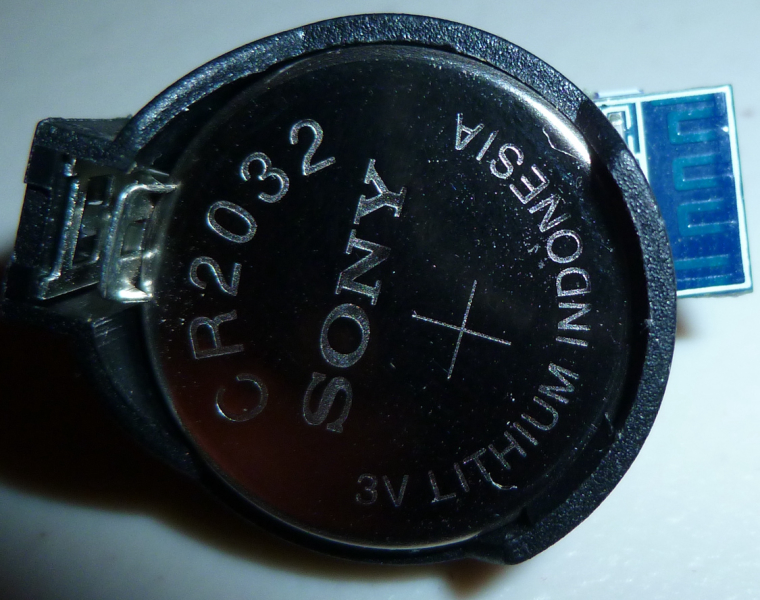
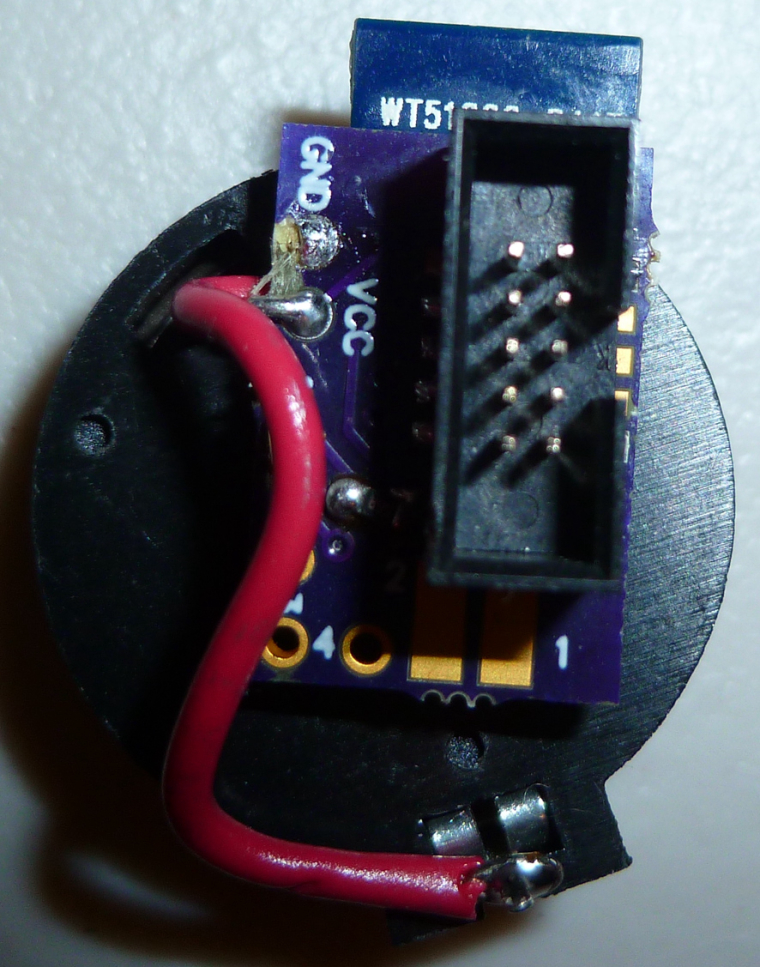
OK, I adjusted it. How about now?
-
I dont have access to the source code now. Can someone please tell which pins are configured as Tx and Rx for serial communication ?
-
I dont have access to the source code now. Can someone please tell which pins are configured as Tx and Rx for serial communication ?
@ahmedadelhosni Do you mean in general? In the general case, you can select which pins are meant for Rx and Tx using your software.
-
@ahmedadelhosni Do you mean in general? In the general case, you can select which pins are meant for Rx and Tx using your software.
Yes I read this from the datasheet but I thought maybe MySensors defines some Pins for debugging.
How can I set them ? Any ApI refrences ?
-
Yes I read this from the datasheet but I thought maybe MySensors defines some Pins for debugging.
How can I set them ? Any ApI refrences ?
@ahmedadelhosni said in nRF5 Bluetooth action!:
Yes I read this from the datasheet but I thought maybe MySensors defines some Pins for debugging.
How can I set them ? Any ApI refrences ?
Look at the source code posted at https://www.openhardware.io/view/510/CR2032-Small-Wireless-Temperature-Humidity-Sensor#tabs-source
It will be obvious from that.
-
Yes I read this from the datasheet but I thought maybe MySensors defines some Pins for debugging.
How can I set them ? Any ApI refrences ?
@ahmedadelhosni said in nRF5 Bluetooth action!:
Yes I read this from the datasheet but I thought maybe MySensors defines some Pins for debugging.
How can I set them ? Any ApI refrences ?Most NRF5 pins are freely configurable. MySensors only uses the definition of the Arduino variant. If you are not lucky with the pins defined with the Arduino board variants, you can use the ArduinoHwNRF5 board. There are examples to redefine pins.
This repository has the release 0.1.0 its usable and stable, but I have plans to rename the files to MyBoardNRF5 and change the g_ADigitalPinMap to the more flexible Arduino primo format in the near future. I think this is required to support NRF52840 MCUs in the future.
-
Thanks both for the guiding. I will look through them.
-
@NeverDie how is the battery voltage doing on your existing test node ?
I think you should include a strong capacitor to help the battery during TX/RX sequences. It's probably less necessary on NRF5 boards, but on atmega+nrf24 a board without a 100-200µF (meaning only around half of that available with a 3V bias) capacitor has a very poor battery life. -
@NeverDie how is the battery voltage doing on your existing test node ?
I think you should include a strong capacitor to help the battery during TX/RX sequences. It's probably less necessary on NRF5 boards, but on atmega+nrf24 a board without a 100-200µF (meaning only around half of that available with a 3V bias) capacitor has a very poor battery life.@Nca78 said in nRF5 Bluetooth action!:
@NeverDie how is the battery voltage doing on your existing test node ?
I think you should include a strong capacitor to help the battery during TX/RX sequences. It's probably less necessary on NRF5 boards, but on atmega+nrf24 a board without a 100-200µF (meaning only around half of that available with a 3V bias) capacitor has a very poor battery life.No real data as of yet, though I haven't noticed any problems per se. What size capacitor do you recommend?
Here's why I was hoping I could maybe sidestep the issue:

http://data.energizer.com/pdfs/cr2032.pdf
i.e. very short pulses might have stable voltage. I'm not sure what amount of current is assumed by that Energizer graph though. -
@ahmedadelhosni said in nRF5 Bluetooth action!:
Yes I read this from the datasheet but I thought maybe MySensors defines some Pins for debugging.
How can I set them ? Any ApI refrences ?Most NRF5 pins are freely configurable. MySensors only uses the definition of the Arduino variant. If you are not lucky with the pins defined with the Arduino board variants, you can use the ArduinoHwNRF5 board. There are examples to redefine pins.
This repository has the release 0.1.0 its usable and stable, but I have plans to rename the files to MyBoardNRF5 and change the g_ADigitalPinMap to the more flexible Arduino primo format in the near future. I think this is required to support NRF52840 MCUs in the future.
@d00616 said in nRF5 Bluetooth action!:
I think this is required to support NRF52840 MCUs in the future.Again, you've done a nice a work on ESB driver :+1:
At least we can confirm that nrf52840 works with regular variant boards, and basic MySensors features, as it was a part of an intense traffic setup yesterday.That's the proof MySensors is getting better week after week :)
-
@NeverDie
I would use 100 to 200uf like said above. That's what i'm doing with all my coincell nodes too.
This is regarding the internal resistance of coincells which is not great >5mA, especially when coincell will be more aged. So it is recommanded to increase lifetime.But not too strong capacitor value, else that won't be better (you don't want to waste energy, and increase internal coincell res, by charging caps, else you would need a current limiting resistor lol).
I would not be too cheap by omitting decoupling and buffering capa, on my boards I prefer to have footprints (optional or not) because sure it can work well at the beginning but as soon as lifetime goes, it can change..
-
Thank you @nca78 and @scalz . Per your suggestions, I added a 100uF ceramic cap to version 8 of the multi-sensor board:
https://www.openhardware.io/view/510/Multi-Sensor-TempHumidity-LeakMagnetLightAccel -
Anyone tried building a bluetooth stack on the nRF5x from within the Arduino IDE? I can see how running it simultaneously with the mySensors code would be tricky, but maybe one could switch back and forth between the two? e.g. if you want to output debug text to a terminal window on your smart phone via bluetooth If so, anyone have any demo code for doing that?
For that matter, has anyone here tried the Arduino Primo? And if so, how did it go?
